SUMMARY
This is AI generated summarization, which may have errors. For context, always refer to the full article.
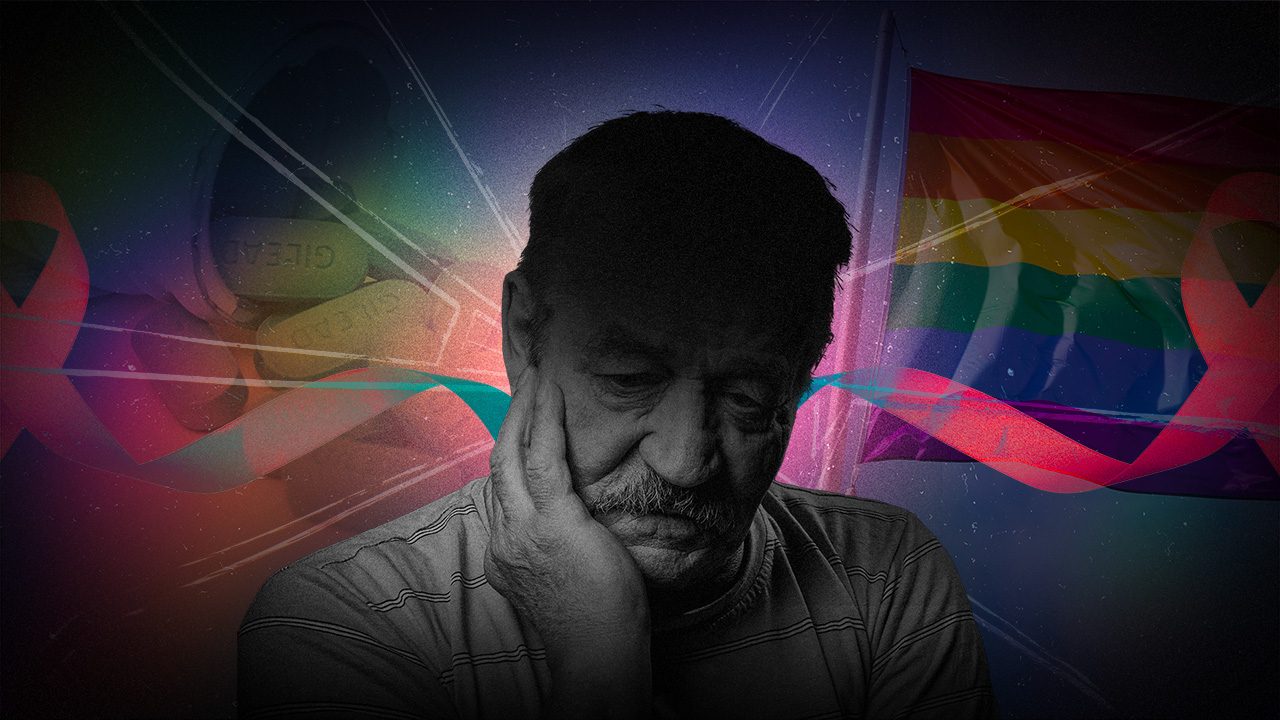
Last of 2 parts
Part 1 | Forgotten identities: The triple burden faced by elderly gay Filipinos living with HIV
MANILA, Philippines – As Arnold, 61, carefully examined his inventory of antiretroviral (ART) medicines, memories of his younger years flooded his mind.
“Ang problema noong araw kasi, wala akong kakilala, wala akong peer support system (The problem before was, I didn’t know anyone, I didn’t have a peer support system),” he said, recalling the time when he first learned about his Human Immunodefficiency Virus (HIV) diagnosis 28 years ago. It was a time when society at large and even the medical community were still trying to fully grasp the nature of the infection and how to treat it.
He felt like his world was crashing down, and he has since told no one but his family.
“Pakiramdam ko noong araw, ang hina-hina ng pakiramdam ko dahil hindi ko naiintindihan iyong sakit. Wala kasing nagsabi sa akin talaga noon at ipinaliwanag sana sa akin nang mabuti kung ano ang aking sakit,” Arnold said.
(I felt weak back then because I didn’t understand my illness. No one really explained it to me thoroughly, and I wish someone had clarified what my condition was.)
He counted the boxes of medicines. They were not for him, but for fellow persons living with HIV (PLHIV) like Roman, 74. As a member of a non-profit for older PLHIVs, Arnold’s job was to deliver medicines to PLHIVs like Roman, who encounter material and physical difficulty buying anti-HIV drugs.
While Arnold has found a renewed sense of purpose from helping his fellow older PLHIV, there are gaps and challenges that extend beyond the management of HIV among his older peers, a group that has often been sidelined in discussions of HIV treatment and general healthcare.
The gap
Over the last decade, the Philippines has witnessed an alarming surge in HIV cases. The period between 2010 and 2022 saw a staggering 418% increase in new infections and a 518% spike in AIDS-related deaths, the most rapid escalation in the Asia-Pacific region.

This increase was also observed among older adults aged 50 and over. Despite this, the multiple burdens faced by older individuals dealing with HIV and AIDS in the Philippines have often escaped attention, on top of the discrimination they face on the basis of their sexual orientation.
“Good thing for us, the young generation, the healthcare needs of the LGBTQ+ community are now being addressed. But how about the older gay individuals? How we approach the aging population is generally seen through the lens of male and female, often overlooking the needs of the LGBTQ+ older persons,” said Jed Catalan, a registered nurse and health development researcher focusing on the healthcare needs of the elderly and LGBTQ+ sector in the country groups.
In his study, Catalan found that senior gay individuals living with HIV perceive themselves and their situations as challenging and filled with uncertainties, fueled by comorbidities and the general lack of support and age-appropriate services.
“These issues are rooted in a lack of access to healthcare services appropriate for their age and misrepresentations, unlike their HIV-positive younger counterparts,” Catalan explained, emphasizing the “triadic social stigma” that older PLHIV face in relation to their sexuality, age, and HIV status.
For older individuals such as Roman* and Arnold, providing care for PLHIV demands more than just suppressing the virus – it requires confronting the myriad of other health issues that come with aging.
In Arnold’s case, he was also suffering from lipodystrophy, a condition characterized by abnormal fat distribution in the body. His doctors said this was a side effect of old retroviral drugs, which he started taking in 2002.
“Binigyan nila ako ng ‘cocktail’ noon, ganoon pa ang tawag sa parang ARV. Marami siyang drugs na kailangan kong inumin. Pero hindi ko naituloy kasi hindi ko kayang inumin, para akong nasusuka sa dami ng iniinom ko,” Roman said.
(They gave me a ‘cocktail’ before, that’s what they used to call it, like ARV. It had many drugs that I needed to take. But I couldn’t continue because I couldn’t handle it – I felt like vomiting with the amount I had to take.)
Modern ART regimens have managed to address side effects and reduce the daily pill burden. A 2017 Lancet study found that taking ART improves the life expectancy of PLHIV by nine to 10 years.
“When you have HIV, everything is accelerated […] the treatment limits the chances of you getting infections related to having HIV, related to having a very, very severe immunocompromised stake,” said Dr. Mark Pasayan, head of the AIDS research group at the Research Institute for Tropical Medicine (RITM).
In any case, Roman and Arnold hoped that aside from the free treatment they get for HIV, they also receive assistance in obtaining free medication for their other ailments and services to improve their physical and mental well-being.
“Malabo na ang mata ko at hirap na akong makakita. May sakit na rin ako sa puso kaya hindi na rin ako puwedeng mapagod nang sobra, pero kaya ko pa naman. Sana hindi mahirap manghingi ng tulong para dito kasi libre naman ang nakukuha kong gamot [para sa HIV],” Roman said.
(My eyesight is getting worse, and I have a heart condition, so I can’t push myself too hard. Still, I can manage. I hope asking for help won’t be too difficult because the HIV medication is free.)
Bridging the gap
As early as the 1990s, the Philippine government tried to address the rising cases of HIV and AIDS in the Philippines by enacting Republic Act No. 8504, or the AIDS Prevention and Control Act of 1998.
This law establishes a national framework for prevention and control, outlining the government’s responsibilities in services, testing, counseling, and protecting the rights of people with HIV.
In 2018, RA 8504 was amended and became Republic Act No. 11166, or the Philippine HIV and AIDS Policy Act.
This more comprehensive legislation emphasizes a people-centered and rights-based approach to HIV and AIDS prevention and response, including combating stigma and discrimination, especially regarding the confidential disclosure of HIV and AIDS information, and ensuring universal access to high-quality HIV and AIDS services for all Filipinos.
Ryan Jay Salvador, senior health program officer at the Philippine National AIDS Council, said various organizations and advocacy groups are already involved in addressing HIV and AIDS in the Philippines.
“During our medium-term plan for AIDS, we shifted our focus not only to the elderly but to all age groups, from neonatal to elderly. We adopted a life-stage approach, unlike in previous term plans,” he said.
An AIDS Medium Term Plan (AMTP) is a strategic document outlining goals, objectives, and strategies for addressing HIV and AIDS over a specific period, typically five to seven years.
It includes HIV and AIDS prevention and treatment that would focus on pre-conception and antenatal care, maternal, infant, and child health, adolescent and youth health, reproductive health, adult health, and end-of-life care.
Ellen Felix, co-convenor of the nonprofit Network Plus and a PLHIV for nearly three decades, emphasized the need for a holistic approach to addressing the care needs of older PLHIVs.
“During our term plan, we know that holistic geriatric service should be included. Of course, if there are comorbidities, one of the burdens in our sector is the expensive cost of treatment. Bukod doon sa senior citizen card, ano pa ba yung pwedeng mekanismo na puwedeng mabigay sa amin (In addition to the senior citizen card, what other mechanisms can be provided for us)?” she said.
Meanwhile, Gem Cabreros, president of Positive Elders, an organization advocating for the well-being of older individuals living with HIV, stressed the importance of integrating mental health support in care packages for PLHIV.
“Hindi natin masyadong nalalaman (We may not be fully aware) but the issue of mental health among the elderly is more prevalent. We would want to have free mental health counseling and treatment for elderly PLHIVs because it’s not only the young who are suffering from mental health issues,” he said.
Cabreros’ organization was established to foster peer support among older PLHIVs and create a community where they can share experiences, provide mutual encouragement, and advocate their specific needs and rights.
“We recognize the crucial role of peer support, especially for aging LGBTQ+ individuals who may be abandoned by their families due to both their HIV status and sexual orientation. We stand as a source of embrace, acceptance, and understanding for the challenges they face,” he added.
In the dusk of their lives
Knowing all too well the difficulty of fighting the battle alone, Arnold now volunteers at Positive Action Foundation Philippines Incorporated, a nonprofit supporting PLHIVs that aims to empower and give assistance to those with HIV/AIDS and their families.
“Ako as a frontliner dito sa organization, ako iyong pumapasyal sa kanila kapag bumibisita ako, may mga sinasamahan ako na matandang abandoned at ako pa ang sasama sa kanila para sa paggamot nila,” he said.
(As a frontline worker in our organization, I visit and accompany elderly people who have been abandoned, especially when they need medical treatment.)
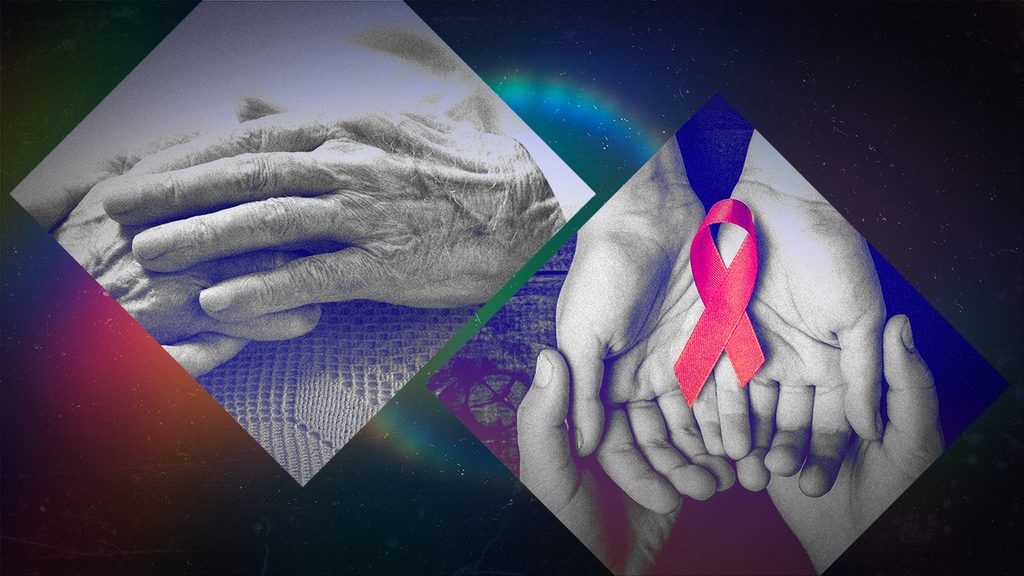
For him, this was not just a “personal strategy to cope” with his condition but was driven by his hope that the next generation of PLHIVs would no longer experience what they went through.
“Ito ang way ng pagtulong ko na, ayaw ko sana na maranasan ng mga kapwa ko HIV+ na matatanda na ang mga ganitong paghihirap lalo na kami ay tila ba mag-isa na lang sa buhay,” he added.
(This is my way of helping. I hope that my fellow HIV+ individuals, especially the elderly, won’t have to experience such hardships, especially when it feels like we’re all alone in life.)
Meanwhile, Roman remains hopeful that older PLHIVs like himself will one day receive the same dignified and comprehensive healthcare, allowing them to age with the respect and support they deserve.
“Ano pa ang mission ko sa mundo, hindi naman ako makakilos? Malungkot kasi nag-iisa ka lang, wala naman akong pamilyang buo. Gusto ko na sumuko pero tuloy lang ang laban, hangga’t kaya,” Roman said.
(What is my purpose in this world when I can’t even move? It’s disheartening to be alone, without a complete family. I feel like giving up, but I’ll persist in the battle as long as I can.) – with research from Mark Laurenz Handayan, Larry Chavez, and Chinnie Ann Mendoza/Rappler.com
*The real names of Roman and Arnold have been purposely changed and undisclosed for their own privacy, safety, and protection. Two months following the interview for this report, Roman succumbed to heart failure, leaving behind his younger brother.
Add a comment
How does this make you feel?
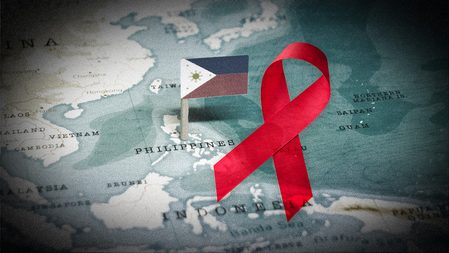


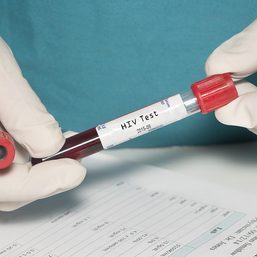






![[Episodes] Option or obligation: Taking care of the people who took care of us](https://www.rappler.com/tachyon/2024/05/Option-or-obligation-Taking-care-of-the-people-who-took-care-of-us.jpg?resize=257%2C257&crop_strategy=attention)
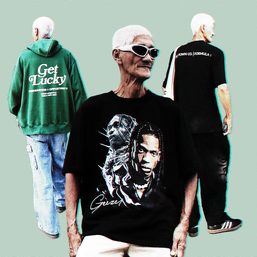
![[OPINYON] Puting buhok at ang mapaminsalang ageism](https://www.rappler.com/tachyon/2024/03/IMHO-Ageism-March-11-2024.jpg?resize=257%2C257&crop=468px%2C0px%2C720px%2C720px)


There are no comments yet. Add your comment to start the conversation.